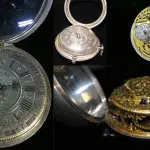
Researchers anticipating new data on Jupiter when Juno spacecraft enters orbit
TORONTO — Researchers in Canada are looking forward to new information from NASA’s Juno spacecraft, set to begin orbiting Jupiter on Monday night.
Juno, launched in August 2011, will complete its journey to the solar system’s largest planet after travelling more than 2.8 billion kilometres over almost five years.
Moritz Heimpel, a University of Alberta physics professor who uses 3D modelling to make simulations of planetary weather patterns, says finding out more about Jupiter is key to uncovering other unknowns about the universe. Heimpel is part of a research team that maps weather patterns on Jupiter.
“Jupiter is sort of a linchpin planet. Most of the planets that have been recently discovered that are outside the solar system are Jupiter-like, they are also gas giants,” he says.


